Keeping Your Kids Out of the Emergency Room
Keeping Your Kids Out of the Emergency Room
A Guide to Childhood Injuries
and Illnesses
Christopher M. Johnson, MD
ROWMAN & LITTLEFIELD
Lanham Boulder New York Toronto Plymouth, UK
Published by Rowman & Littlefield
4501 Forbes Boulevard, Suite 200, Lanham, Maryland 20706
www.rowman.com
10 Thornbury Road, Plymouth PL6 7PP, United Kingdom
Copyright 2014 by Rowman & Littlefield
All rights reserved. No part of this book may be reproduced in any form or by any electronic or mechanical means, including information storage and retrieval systems, without written permission from the publisher, except by a reviewer who may quote passages in a review.
British Library Cataloguing in Publication Information Available
Library of Congress Cataloging-in-Publication Data
Johnson, Christopher M.
Keeping your kids out of the emergency room : a guide to childhood injuries and illnesses / Christopher M. Johnson.
pages cm.
Includes index.
ISBN 978-1-4422-2182-6 (cloth : alk. paper) ISBN 978-1-4422-2183-3 (electronic)
1. Pediatric emergenciesPopular works. 2. ChildrenWounds and injuriesPopular works. 3. ChildrenHealth and hygienePopular works. I. Title.
RJ370.J627 2013
618.92'0025dc23
2013020555
 TM The paper used in this publication meets the minimum requirements of American National Standard for Information Sciences Permanence of Paper for Printed Library Materials, ANSI/NISO Z39.48-1992.
TM The paper used in this publication meets the minimum requirements of American National Standard for Information Sciences Permanence of Paper for Printed Library Materials, ANSI/NISO Z39.48-1992.
Printed in the United States of America
Acknowledgments
I thank my wife, Jennie Crystle, for her idea to write this book in the first place, as well as my able agent, Anne Devlin, for her enthusiasm and guidance. My copyeditor, John Shanabrook, made it the best book it could be. Most important, I thank the thousands of parents who have trusted me to care for their children over the past thirty-plus years.
Chapter 1
To Go or Not to Go:
The Parents Dilemma
Last year Americas 76 million children made 27 million visits to emergency departments. That is around one visit for every three children. Of course some children accounted for more than a single visit. Even so, the fact that a third of all our children are going to the emergency department each year is a sobering statistic. Was your child one of them? If so, you probably know the difficulty in deciding if and when it might be time to take your child there. Sometimes it is easy to know when to make the tripan obviously serious injury, for examplebut often it is very hard indeed to decide. This is especially so for parents of small infants, who account for a large proportion of children visiting the emergency department. Parents appropriately tend to err on the side of prudence; they bring their child in when they are unsure if the problem can wait or not. Usually this means deciding if their childs problem can wait until morning, because three-quarters of childrens trips to the emergency department happen during the evening or nighttime.
If you have ever visited an emergency department with your child, you probably noticed that, whether big or small, emergency departments are not set up for efficiency from a parents perspective. Rather, they are designed to be efficient from both a doctors perspective and that of a critically ill or severely injured person. They are set up to be ready for anything on a moments notice. Like a fire department, an emergency departments staffing and equipment arrangements need to be appropriate for a wide variety of worst-case scenarios. Luckily, very, very few of the millions of children who come to the emergency department need these things. But the facility needs to be ready, just in case. This inevitably builds an enormous inefficiency into the system from the overkill of being always prepared for such rare situations.
Many emergency departments also operate walk-in clinics for children, often adjacent to the full department. These too are often cumbersome, inefficient places to get your child needed care. For one thing, since your childs regular doctor is not there, they do not know her. For another, walk-in clinics are expensive to runnot so expensive as a fully equipped emergency department, but still quite costly. Yet another reason to avoid these facilities is this: if your insurance coverage has an out-of-pocket co-pay, as most do, it will probably cost you more than an equivalent visit to a doctors office. Why is that? The main reason is that although they might have portions of your childs previous medical record to consult, really these new doctors do not know her at all. So they are much more inclined to order tests your regular doctor would not need. Of course if you do not have health insurance, your bill for going to an emergency department or walk-in clinic will be very much higher than it would have been for getting the same care during a visit to a doctors office.
The fact that emergency departments are structured this way can be an enormous frustration for parents whose child is not critically or even seriously ill. It is just plain hard for parents to know which problems should be seen right away, which can wait for later, and which probably do not need to be seen by a doctor at all. During my years working in the emergency department, I often found that what parents really needed was not so much medical care for their child as simply information; had they already known what I told them during my evaluation of their child, they often could have avoided the emergency department visit altogether, or at least put off their midnight trek until the next day.
This book will give you specific information about the ailments that most commonly lead parents to consider bringing their child to an emergency department or after-hours clinic. The goal is to give you, the parent, insight into how we doctors look at things, how we decide what is serious and what is not. It will also describe for you what care you should expect to receive when you bring your child there, as well as when you should consider insisting on more than is offered to you.
This book is not a substitute for a doctors evaluation, and it is certainly not an invitation to practice medicine on your children. Nothing can replace what a doctor does. But over the decades I have practiced emergency pediatrics, I have found that nearly all parents, when given specific information about how doctors evaluate children in the emergency department, make excellent decisions about what their child needs. After all, no one knows a child as well as his or her parents.
Chapter 2
What Should You Do?
This chapter will get us started by telling a series of storiesreal-life examples I have seen over the years of the illnesses and injuries children get, and for which their parents brought them to the emergency department. At the end of each one I ask this simple, bottom-line question: If this were your child, what would you do? There are various possibilities, ranging from doing nothing to doing the maximum. We will use the following four action plans throughout our discussions.
Watchful waiting. Observe your child closely to see what happens next.
Call the doctor. Call your childs doctor, if he has one, which these days often means calling an answering service or help line staffed by nurses.
Go to the emergency department. Take your child there promptly.
Call 911. Do not drive your child to the emergency department yourselfcall for immediate help.
Each scenario will conclude by telling you the best option to choose. But what you really need to know is the why, the rationale behind the answer. Most of the key components of that rationale are accessible to any parent who wants to learn them. That is the sort of information that will allow you to make good decisions about what is best for your child when she has, for example, a fever and a sore leg in the middle of the night.
Next page







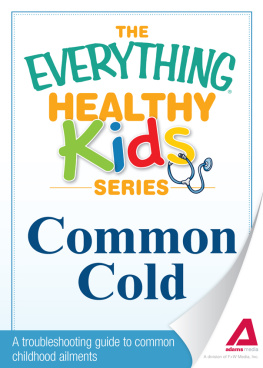


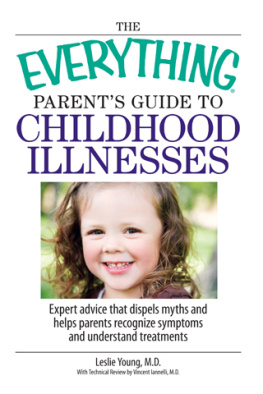
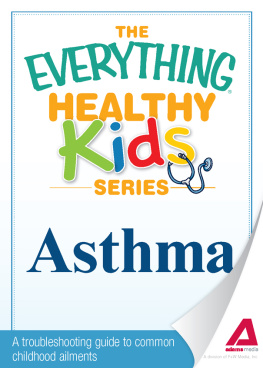
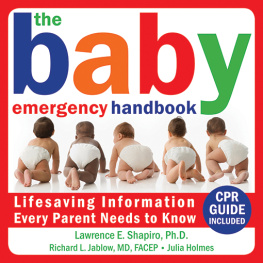

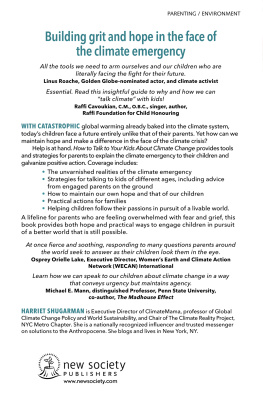
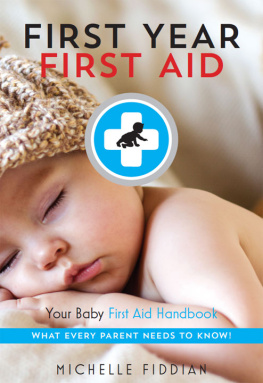
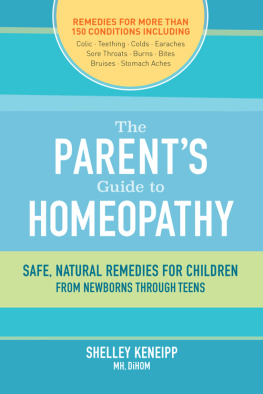
 TM The paper used in this publication meets the minimum requirements of American National Standard for Information Sciences Permanence of Paper for Printed Library Materials, ANSI/NISO Z39.48-1992.
TM The paper used in this publication meets the minimum requirements of American National Standard for Information Sciences Permanence of Paper for Printed Library Materials, ANSI/NISO Z39.48-1992.